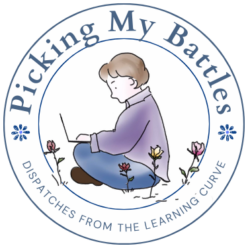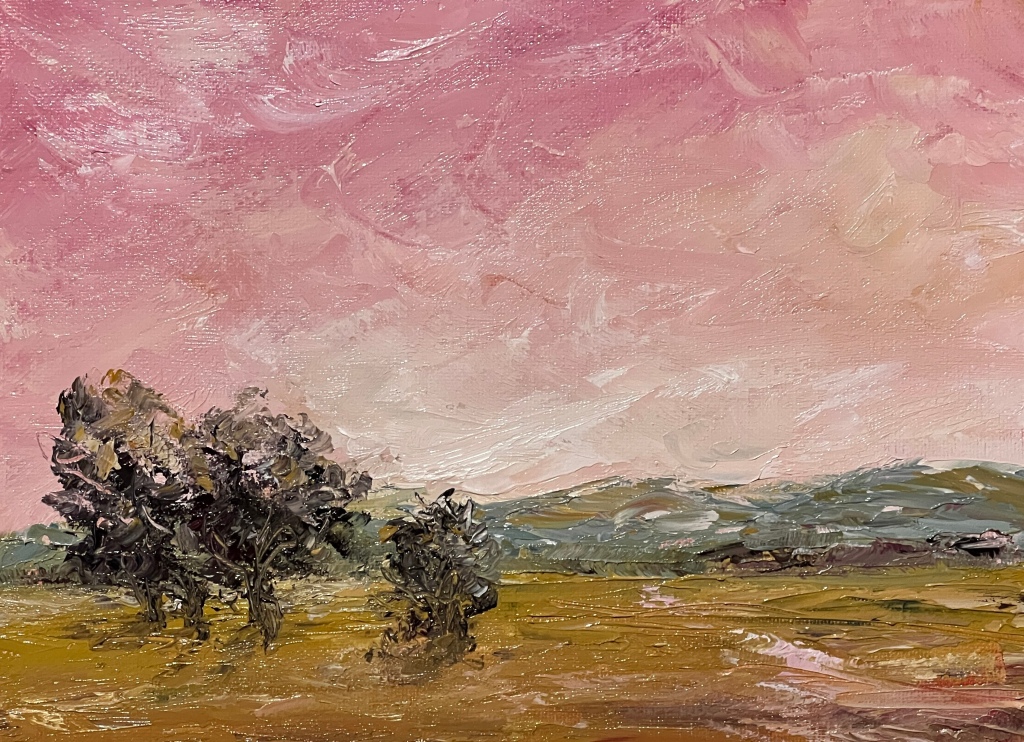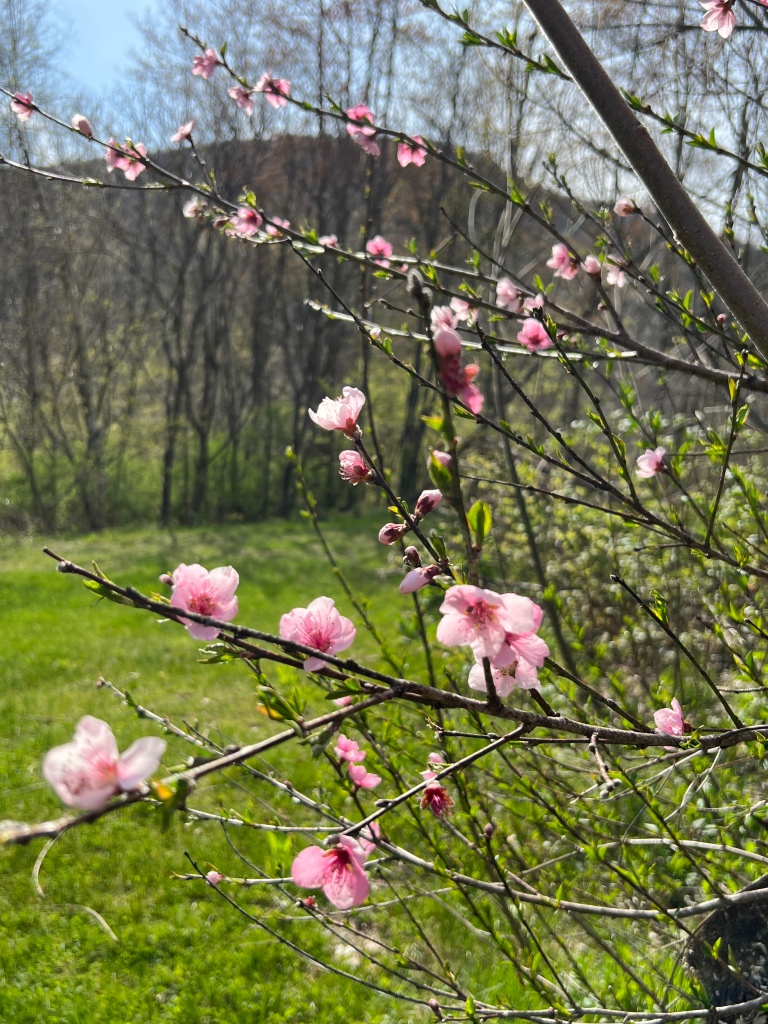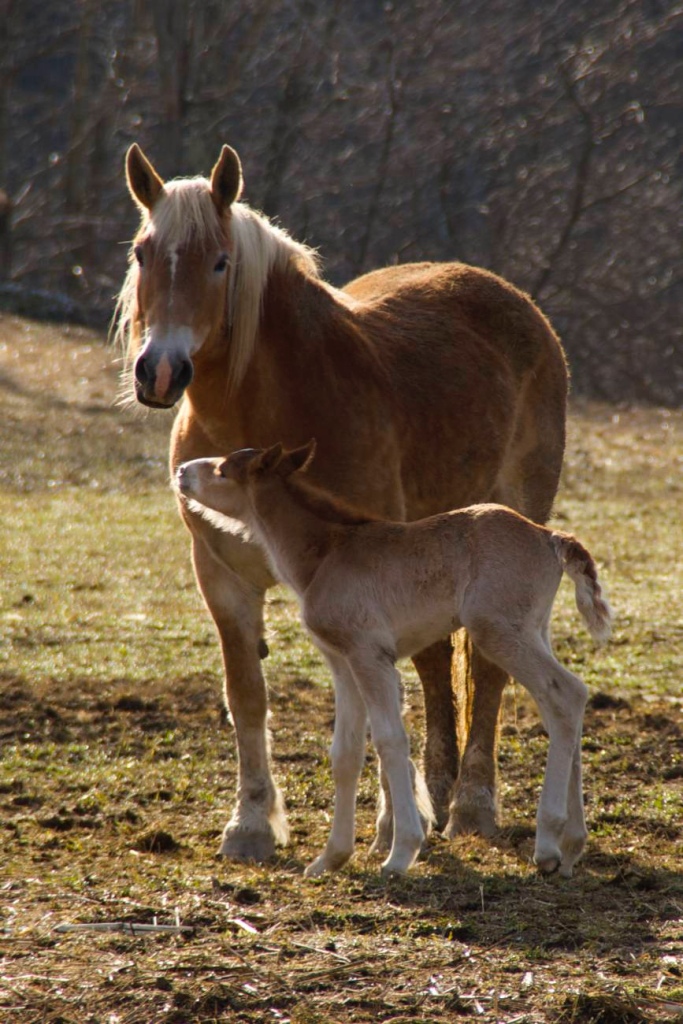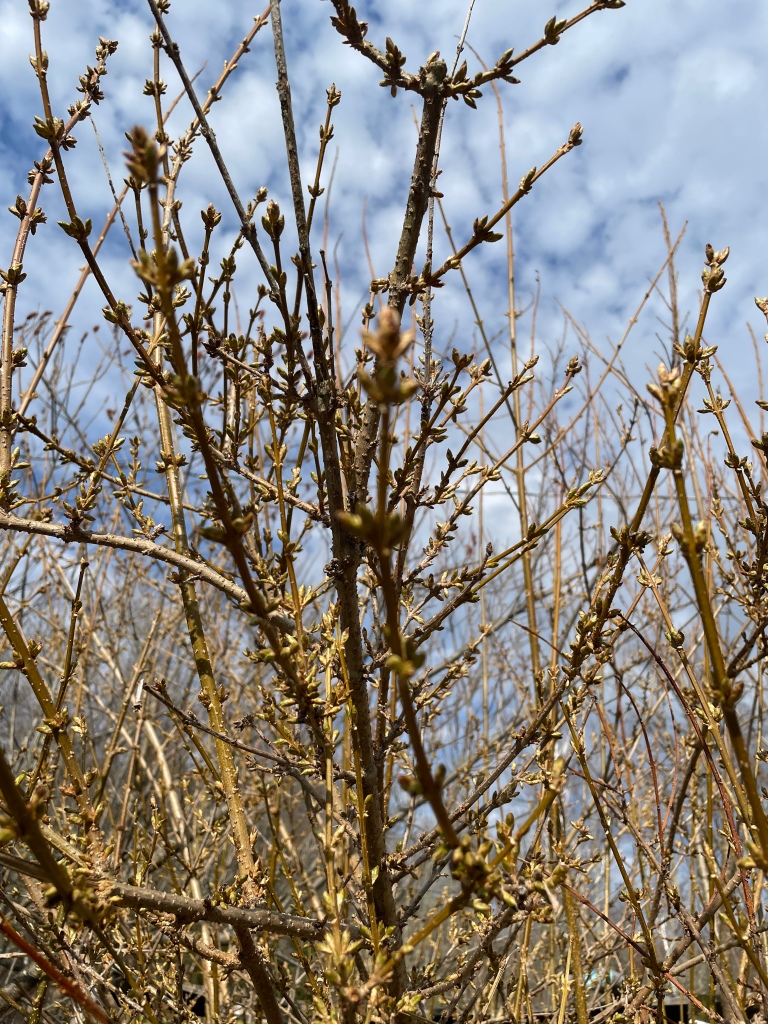I knew the lighthouse would be the most difficult thing to paint. I usually take only palette knives when I do plein air, and my hand has been shaking for the last few months because of my Ménière’s.
Still, the beach and dune and lighthouse in Southhaven Michigan are almost obligatory subjects, and I knew, if I didn’t at least attempt to paint them, I would have them nagging at me for the rest of the week as I tried to capture other scenes around southwestern Michigan. So I got out of the house early in the morning and set up my easel in a shady spot with a good vantage point, determined not to let any inner critics make the scene more challenging than it would be.
I like painting mountains and fields. I know them, and I can focus on the feeling and not the fundamentals. Painting the lake should be easy (I’ve been here every year since I was a fetus). I haven’t, however, practiced enough with that spot where the water meets the sand on a calm day or the crash of the waves. Seeing was going to be a challenge without perfectionism getting in the way.
The sky and horizon went in pretty easily. I’d done a rough sketch of where the lighthouse and trees in the foreground should go. Even the blues of the lake seemed to be dropping in pretty easily.
Then came the time to draw the rigid lines of the pier that connects the lighthouse to the shore. I’d loaded my palette knife with dark gray to scratch a thin dark line across the middle of the lake when a woman asked if she could take a peek. I always say yes to be friendly even if I’m not happy with the work and don’t want someone to see it. We chatted about where we were from and our connections to South Haven.
“I’ve always wanted to paint,“ she said, “but I’m not really an artist.“
“Everyone’s an artist,“ I said. “You should paint it.“
She mentioned having gone to paint and sips and how frustrated she’d been worrying over details and the painting that weren’t turning out the way she wanted. I said I liked the paint and sip idea because it got people to create.
“But,” I said, “perfectionism is where paintings go to die.“ I was saying it as much for myself as for her, as I knew the lighthouse would begin as soon as our conversation ended.
We chatted for a few more minutes and then she let me get back to my painting and, using my wrist to balance, I started to drop in the pier. The line was mercifully straight, but now it was time to drop in a tiny red, vertical dash to represent the lighthouse.
My hand shook as I tried to pop the tiny red line in, and I ended up with a little squiggle. I scraped out that part of the lake put it back in, put in the line for the pier and tried the lighthouse again.
It still wasn’t right.
Scrape. Paint. Scrape. Paint.
I finally decided that the next iteration of pier and lighthouse would be the last. I popped them in and put the painting in the back of the car, went home, and scraped the canvas clean.
Later that day I was reading about the painter Elaine de Kooning and her husband and artist Willem de Kooning. Bill had a habit of scraping paintings with he disliked, much to the dismay of his wife who often loved the destroyed pieces.
I realized that, however bad I thought the painting was (and it really was), scraping the canvas was the extreme end of letting nitpicking and perfectionism kill the work.
This morning I returned to the same spot, determined to let the mood of the morning guide the work. Almost as if some creative collective was ensuring the lesson was learned, I easily found a shady spot to park and set up. Another couples set up their chairs to read in the shade and listen to the waves. I’d forgotten my iPod, but, as soon as I had my colors arranged on the palette, a pair of folk musicians started playing nearby.
This time the pieces came together easily. I loaded the knife and the pier appeared as I slid the edge on the canvas. The lighthouse was far from perfect, but, at the end of the season, there was only one incarnation as the imperfect but finished painting got packed to go home.
